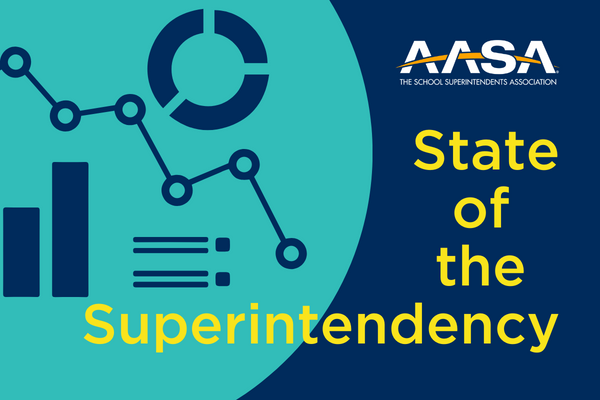Embracing the Four-Day School Week
March 01, 2024
It’s gaining in popularity to address teacher retention, but what’s the real impact on students and their learning?

Dena Naccarato, superintendent of the Post Falls School District in northern Idaho, was losing teachers, and the reasons were primarily economic. The cost of living in the community had skyrocketed, and plenty of people, teachers included, were selling their homes and moving to less expensive parts of the country. If they stayed, they increasingly were lured away by the $20,000 or $30,000 pay bump offered at nearby school districts across the border in Washington.
In 2022, Naccarato started researching a solution that hundreds of other districts across the country have implemented for similar reasons: the four-day school week. The benefits of an extended weekend, she reasoned, might provide Post Falls with an advantage over those higher-paying districts and net some other benefits, too.
Last fall, a month into Post Fall’s first school year with a four-day week, it was too soon to measure many advantages, but there was one big one already. The need for substitute teachers was cut in half in September, saving the district with just under 6,000 students about $20,000. “I do think our staff is happier,” Naccarato says. “They’re more refreshed.”
Escalating Interest
Across the country, the number of school districts adopting the four-day school week has exploded — 2,100 schools in 900 districts are currently operating with the schedule, according to Paul Thompson, an associate professor of economics at Oregon State University whose research has focused on the impact of the four-day instructional week.
But while school leaders say the four-day week, with typically a Monday or Friday as the off-day, is bringing relief to educator attrition and substitute teacher costs, researchers and lawmakers are raising alarms about the modified schedules’ effects on students.
Superintendents who are adopting the schedule hear those concerns. Some districts have returned to a five-day week. For now, without the political will to make teaching a more lucrative and less stressful profession, the four-day calendar is helping them keep teachers in classrooms.
“We really need to think about the underlying causes of why we don’t have enough qualified and dedicated [teachers] or at least people interested in the profession,” says Adam Leckie, superintendent of Arizona’s Casa Grande Elementary School District, which adopted the schedule in 2022. “That’s going to be a problem that can’t be solved with a four-day week. But it is going to slow down some of the issues.”
Economic Influences
The four-day school week is hardly new, and its popularity has mostly followed the ups and downs of the U.S. economy.
The first instance popped up in the late 1930s and grew into a small, but more substantial number during gas shortages of the 1970s, Thompson says. The schedule is particularly popular in rural communities and Western states where school districts’ geographic areas can be quite large.
Over the past two decades, interest has surged. During the Great Recession, the economic downturn triggered a spike amid budget cuts. As in Post Falls and Casa Grande, the most recent wave comes around the question of educator retention and hiring during a time of perceived declines in teacher morale, Thompson says.
“We’re seeing massive adoption in places like Missouri, Texas, Arkansas, using the four-day school week as a way to try to deal with teacher shortages and teacher burnout that have come out of the pandemic or started even before the pandemic,” he says.
Research Mixed
Despite that long history, academic research into the outcomes is just beginning. Early research is finding mixed results when students, on average, attend school for 148 days instead of the 180-day national average. “The biggest takeaway here is don’t make a rash decision around adopting the four-day school week,” Thompson says.
In a 2022 research paper titled “Only a Matter of Time? The Role of Time in School on Four-Day School Week Achievement Impacts,” he studied student learning in four-day schools in 12 states. Districts with the lowest amount of instructional time because they didn’t extend the school day or school year much to make up for the lost classroom time saw declines in achievement, according to the study. Districts that added back most of the seven hours lost when moving to a four-day calendar saw no difference in outcomes.
A 2021 report from RAND Corporation, which considered outcomes in several states with four-day schools, found student achievement either stayed the same or continued to improve in districts with four-day schedules. But compared to students who attended school five days per week, student achievement didn’t grow as quickly and that matters, says Christopher Doss, a RAND policy researcher who worked on the report.
“It’s not a huge drop in test scores. But every year, they grow a little bit slower,” says Doss, a former high school science teacher. “Over time, that can accumulate into something that we should be concerned about.”

A lack of large-scale data supporting four-day calendars is prompting lawmakers in some states, including Texas and Missouri, to question whether it’s right for students and communities. A Democratic state senator in Missouri, Doug Beck, introduced a legislative bill in December that requires larger districts to ask voters to approve any move to a four-day schedule and incentivizes schools to remain on the five-day calendar.
“Nobody has ever said once that going to four days is better for kids,” says Beck, a former school board member in the Affton School District near St. Louis. “No one has ever said it is better for learning. They’ll say it hasn’t hurt. But the research is so limited. …. We don’t know.”
Community Impacts
But while academics and lawmakers may be raising concerns, superintendents say they have little choice as they struggle to hire educators. Teacher retention was a primary concern when Mineral Wells Independent School District in Texas moved to a four-day schedule for the 2022-23 school year. Superintendent John Kuhn thought the idea was “gimmicky” until he lost a veteran teacher to a nearby school system that had made the calendar adjustment.
“We lost four teachers total to these four-day week schools while we were having the conversations with the board about it,” says Kuhn, a superintendent for 14 years.
The move to a four-day schedule has increased the quantity and quality of applicants, he says, adding, “I think they’re choosing us even though they could make more money elsewhere because of the four-day week.”
Teachers organically started sharing on social media how they were spending that extra day with their families. That’s proof to Kuhn that the four-day week provides work-life balance for teachers, ensuring they’re at their best in the classroom.
“I’ve heard the criticisms from people who say time on task is super important for learning. But in my mind, quality time on task is what’s important, not just time,” Kuhn says. “I can give my kids four days a week with an excellent teacher. I’m not sure that’s a worse deal than five days a week with a mediocre teacher.”
To offset community impacts or learning loss, superintendents say they’ve been mindful to protect instructional time and fill in gaps for families and the community when school schedules are reduced.
To make up for the lost classroom time, schools often extend the daily bell schedule, expand the school year or reduce vacation days. Casa Grande in Arizona ended early-release Wednesdays and added 30 minutes to the daily schedule, so students are missing 2.5 hours of classroom time per week instead of a full day.
Districts that have made the move to a four-day week have set up opportunities for meals and child care for students whose families can’t support those needs on the fifth day. Mineral Wells provides optional remediation on most Fridays for students in 4th grade and under. As many as 1,700 students qualify for the care, but, by the end of last school year, only about 20 participated. Low use of fifth-day programs like this apparently is common.
“A lot of the critics raise up the issue that … the reason why you shouldn’t be able to do it is it’s really hard on these families,” Kuhn says. “In reality, what we found is families have options — even your poorest families.”
And they’re evaluating outcomes. Superintendent Byron Hurst arrived at the 1,500-student Bogalusa City Schools in Louisiana last summer after the school board had approved a four-day schedule a few months earlier.
“As a leader, I made it very clear that if we don’t see any improvement in academic performance, any improvement in employee attendance, student attendance, then we have to ask the question, ‘Is the four-day work week working?’” says Hurst, who earlier served nine years on a school board in another district. “And if we can’t answer those three questions, then we have to do what we need to do to support our students.”
A Difference Maker
Some districts do change their minds. With just 118 students, Lutie School District in Missouri’s Ozarks moved to a four-day schedule in 2019. At the time, the rural district struggled mightily to find substitute teachers whenever teachers, many of whom commuted 45 minutes to school each day, needed to take time off for medical appointments.
The four-day week was a selling point to prospective teachers — until other nearby districts adopted the abbreviated schedule, says Kathalee Cole, Lutie’s superintendent and high school principal. “The [hiring] incentive is no longer there.”
But another issue has since emerged: deep pandemic-related learning loss among its students. Lutie returned to a five-day week in August and added free child care and a workout room for its staff.
The day care, Cole says, probably helped her retain two teachers who had babies last spring. And it has allowed her to grow her pool of substitute teachers, who can take advantage of the free care when they work, from one teacher to six.
“Teaching nowadays is so hard,” Cole says. “It is not like it was whenever I started many, many years ago. It’s a different environment. Kids are different. Teachers are leaving the profession hand over fist. We need to be doing everything that we possibly can in order to keep them.”
Limited Alternatives
Whether through a four-day week or free child care, supporting teachers so they can educate students is the ultimate goal, superintendents say. Without broader support for public education, they have few options.
“This is an outside-the-box way of saying what else can we offer our staff,” Kuhn says of the four-day week. “We can’t afford to stop looking for ways to meet the needs of our teachers because it’s an extremely competitive marketplace, and there aren’t enough quality teachers to go around.”
In Post Falls, Naccarato doesn’t just hear support from teachers for the four-day week. Parents, especially those with students engaged with sports or clubs, tell her they’re happy for the reduced instructional week. “The Friday gives them a moment to breathe and hang out with their families and get ready if it’s a Friday night football game or volleyball game,” she says. “It seems to be making a difference.”
Sarah Hall is a freelance writer in Raleigh, N.C.
Author
Advertisement
Advertisement
Advertisement
Advertisement



-(16).png?sfvrsn=44688378_7)
